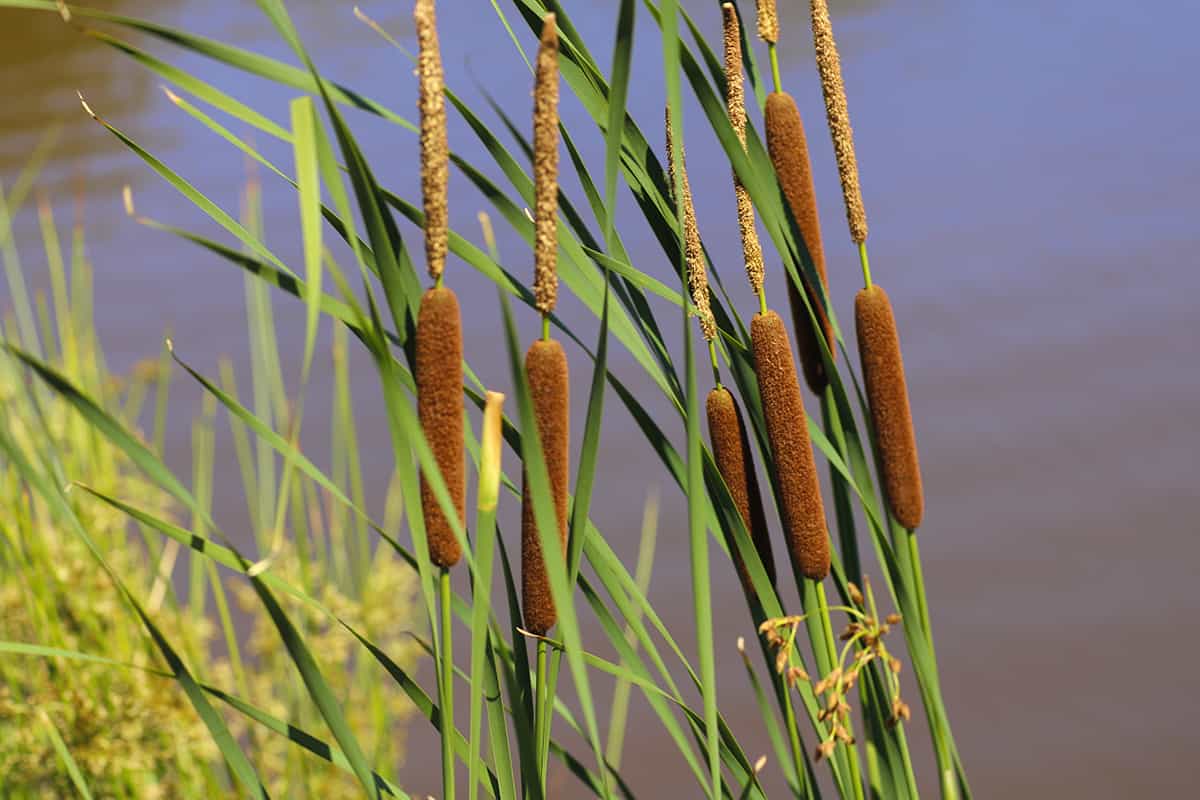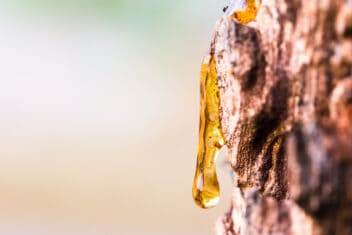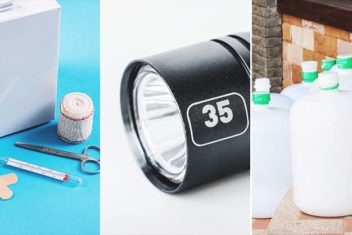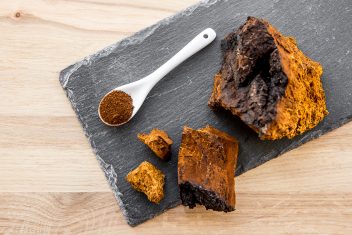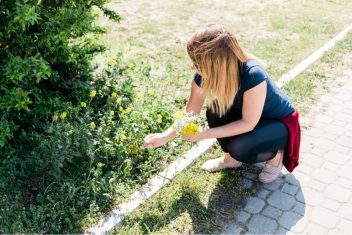You’ve probably seen cattails countless times in your life. They stand like sentinels along ditches and around ponds and marshes all over the world. People have been using them for food, medicine, household items, and tools for countless generations, and now you can too!
Many people disregard cattails, but they’re incredibly useful. In this article, I’ll touch upon some of the ways you can use these amazing plants.
What are Cattails Anyway?
Cattails are reedy marsh plants that grow prolifically worldwide. They’re all of the genus Typha and belong to the Typhaceae family.
The species you’ll find in North America generally include the common one (Typha latifolia), blue cattails (Typha glauca), narrowleaf (Typha angustifolia), and Southern cattail (Typha domingensis). The T. latifolia species is one of the most prolific and most found worldwide. Back home in the UK, we call these “bulrushes” or “great reedmaces.”
While some plants have similar-looking leaves, there are no lookalikes with that characteristic brown seed head, which makes foraging for cattails easier.
1. Food and Medicine
Cattails are playfully referred to as nature’s supermarket. Every part of this plant is edible, from its juicy roots to its flavorful pollen.
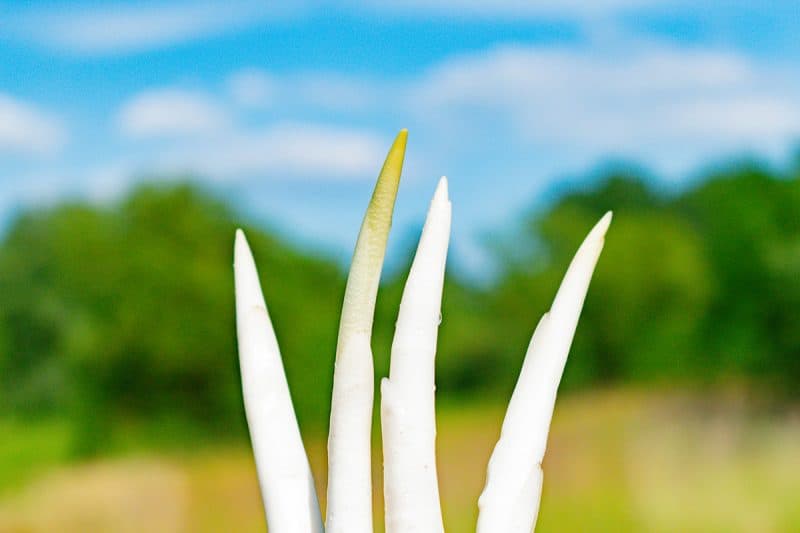
The roots are called “corms”, and you can eat them raw or cooked. They taste sort of like a mix between corn and potato, and are absolutely delicious. Cook the young shoots like asparagus, and the young buds like corn cobs. Once the buds still left on the stalk start flowering, gather the pollen. You can mix it into pancakes and other baked goods, add it to smoothies, or sprinkle it on roasted veg as a seasoning.
In terms of medicinal uses, you can mash or slice the corms (roots) into poultices. Topically, these are great for alleviating pain and swelling in cuts, bruises, burns, and scrapes. Their mild analgesic properties can also ease pain, swelling, and itching from insect bites and stings. [1]
2. Fire Starters
You know that amazing “whoosh!” that happens when you set a fire successfully on your first try? Well, dried cattail heads are spot-on for making that happen. Here’s a tip: gather those dried, spent heads in the autumn and wrap them in fallen birch bark. Never strip the bark off of a live tree, but feel free to gather it from fallen specimens.
Once you have birch-wrapped cattail head “sausages,” keep them in your kindling box. Then, when you want to start a fire, place one in the center of your kindling pile. Prepare to witness the whoosh.
3. Torches
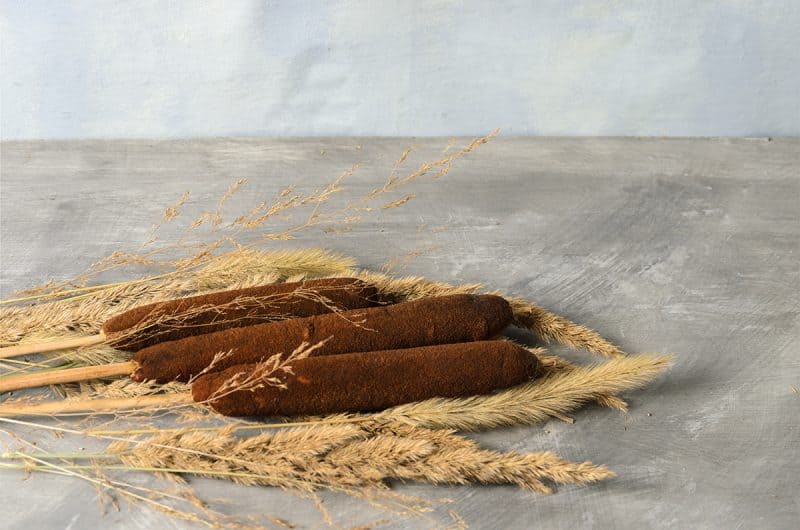
Those dried heads’ incendiary properties also make them rather perfect (albeit quick-burning) torches. Leave them on the stalk and just set them ablaze if you need a light in a dark place for a couple of minutes.
4. Stuffing
The First Peoples have been using cattail fluff as stuffing for pillows, baby blankets, etc. for thousands of years. Take a cue from them and use this fluff in similar ways! For example, use it in lieu of goose down or synthetic polyfill when making insulated jackets.
You can also use it to stuff children’s toys, or in small quilted items like potholders. My partner even uses it to fill the little hexi puffs she knits for her Beekeeper’s Quilt. They get really fluffy!
5. Mats
Mats don’t get the love and respect they deserve. Most of us only come across placemats on tables now and then, but you can use these things for so many purposes. Keep them close to the doorway to place shoes and boots onto. I like them as floor coverings in outdoor shelters, and I usually take one along with me when I go hiking. Just roll one up like a yoga mat, and you have a clean thing to sit on when foraging or picnicking.
6. Chair Seats
Woven cattail leaves make surprisingly sturdy chair seats. Additionally, the green, pliant stems can be woven like rattan to make stools and ottomans.
7. Cordage
Those long, slender leaves make really strong cordage as well. You’ll need to cut them into finer strips to plait them smoothly, but that’s an easy task. In fact, if there are small humans around, convince them to do it for you. Then do a three- or four-strand plait to create sturdy twine.
8. Baskets

Indigenous Peoples have been weaving cattail baskets since time was time. The long green leaves are absolutely perfect for weaving, and they’ll create sturdy baskets of all shapes and sizes. You can even use them for container gardens and raised beds! They’ll last as long as your growing season, and you can compost what’s left of them in the fall.
9. Arrow Shafts
I’m pretty big into making my own equipment as much as possible. When it comes to making tools, shelters, etc., being able to use items from the land I’m living on makes me feel like I’m a part of it, not just a visitor.
As you might imagine, I was delighted to discover that I could use cattail reeds as arrow shafts! They pair really well with homemade arrowheads and are both straight and strong: two great attributes for a successful arrow.
10. Fish Basket Trap
This goes along with the woven baskets mentioned earlier. You can use a combination of stalks and leaves to make a fish trap.
11. Lean-To Shelter
It’s important to know how to create an emergency shelter, just in case you ever need it. Sure, checking the weather before you go camping is a great idea. But inclement weather or unexpected setbacks can happen just about any time. If a massive gust of wind blows your tent away, knowing how to build a lean-to can keep you protected from rain and sun.
Cattails are perfect for this type of structure. You can use their long, sturdy stalks to support the walls. Then weave their long leaves between them.
Additionally, you can weave big mats out of the leaves and use them as roofing for all kinds of shelters. Create a double layer, and you’ll basically have a weatherproof roof for just about any structure.
12. Hats
You can transform various cattail parts into clothes and accessories. Granted, you probably don’t want to weave underwear from them, but they’re remarkably good for some other heavy-duty items.
Remember how we mentioned that cattail leaves can be woven into mats and baskets? Well, guess what? You can use those same weaving techniques to make yourself some jaunty-looking hats! Check out this tutorial by the Urban Aboriginal on how to weave cattails into a fedora.
How could anyone look at this hat and NOT want one of their own? Of course, you can make a cattail hat in pretty much any shape you like, from this style to those big floppy hats that ladies love to wear whilst tending their peonies.
13. Snowshoes
Have you ever worn traditional snowshoes? If so, you’ve probably noticed that they’re woven in such a way that distributes weight across snow’s surface. Well, these plants’ long, slender leaves are basically perfect for snowshoe making. Whether you’re exploring traditional crafts or you’re in an emergency situation, knowing how to make these can be of immense benefit to you.
14. Satchels
Remember those mats and baskets we talked about earlier? Well, if you bend (or weave) a mat into a thin “U” shape, you have an ideal satchel to carry around with you. You’ll need to sew or weave the sides shut, but it’ll look equivalent to a laptop bag once you’re done. Then, attach a cord or strap to it, and you can carry essential tools around with you.
15. Toys
Cattail dolls have been popular in Lapland and Finland (and probably most other places) for thousands of years. Many different Native American and Canadian tribespeople also used cattails to create little toy figures for their children to play with.
You can also make toy ducks out of them (and likely many other animal figures). Although I haven’t tried it myself, I imagine you can create items like rackets for smacking balls around too.
As you can see, you can use these amazing plants in countless different ways. I only touched upon a few of them here! I’m guessing that there are dozens, if not hundreds of other uses for them that I haven’t even heard of yet. This just makes me love and respect these plants even more.
References:
- L.S. Black Elk et al: Culturally Important Plants of the Lakota; Sitting Bull College Publications, 1998
